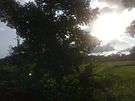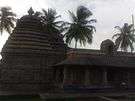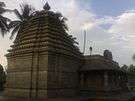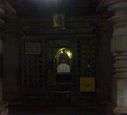Halasi
| Halasi ಹಳಸಿ Halshi Halasi (Palashika) | |
|---|---|
| Former Indian capital of Kadambas | |
|
Bhuvaraha Narasimha temple at Halasi | |
 Halasi Location in Karnataka, India | |
| Coordinates: 15°38′N 74°31′E / 15.63°N 74.52°ECoordinates: 15°38′N 74°31′E / 15.63°N 74.52°E | |
| Country |
|
| State | Karnataka |
| District | Belgaum |
| Elevation | 649 m (2,129 ft) |
| Languages | |
| • Official | Kannada |
| Time zone | IST (UTC+5:30) |
| PIN | 591120 |
| Telephone code | 08336 |
| ISO 3166 code | IN-KA |
| Nearest city | Belgaum |
Halasi (Kannada ಹಳಸಿ) also called as Halsi or Halshi, is a town in Khanapur Taluk, Belgaum District in Karnataka, India. It is 14 km from Khanapur and about 25 km from Kittur. It is famous for having been the capital of a branch of Kadamba Dynasty. The town is rich in historical monuments and temples and is near Khanapur.
Halasi is in Background of Western Ghats in lush green atmosphere. It was the second capital of the Kadambas of Banavasi. The huge Bhuvaraha Narasimha temple [1] has tall images of Varaha, Narasimha, Narayana and Surya. The place has a fort, and temples of Gokarneshswara, Kapileshwara, Swarneshwara and Hatakeshwara.
Halasi has groups of monuments like Kalmeswara, Suvarneswara, Ramalingeswara and Bhuvaraha temples.
Kadambas of Halasi
Bhoo Varaha Laxmi Narasimha Temple

The Archaeological Survey of India is looking after this ancient structure.
Halasi was called Palasika in ancient times and the Bhoo Varaha Laxmi Narasimha Temple is one of the best examples of the Kadamba style of architecture. The 50 feet tall tower of the inner shrine or garbhagruha is very similar to the Madhukeswar temple in Banavasi built by them.
According to historians, it was built during the Kadamba period or 5th century AD, and inscriptions inside the temple also support this. As per the records, it was built by Shivachitta. In 1169 AD, the idol of Ananta Viravikrama Narasimha installed by Matayogi.
According to a legend associated with this shrine, Pandavas built this temple overnight during their exile and worshiped Lord Vishnu here.
According to the temple priest, the two feet tall idol of Narasimha, on the left side of Vishnu, is swayambhu or udbhava and not sculpted by anybody.
- Inside the temple
There are two garbhagruhas facing each other. In the right one is the four feet idol of Lord Shri Vishnu in a sitting posture. The idols of Suryanarayana and Mahalaxmi are just behind the main idol.
The garbhagruha on the left side has the idol of Bhoo Varaha Swamy. In 1186-87, a 5 feet standing idol of Varaha was installed by Vijayaditya III. Lord Vishnu's Varaha avatar, where he carries Mother Earth (or Bhoodevi) on his tusk, can be seen. The beautifully carved lotus on the ceiling goes to prove that the Kadambas patronised and developed their own art form.
Just outside the main temple are smaller temples dedicated to Ganesha, Shiva and Vitthala. One fine statue of Radha Krishna can also be seen in a smaller shrine.
Gallery
| Photo gallery |
|---|
|
|
See also
References
- ↑ "Kadamba glory". Retrieved 2008-09-03.
External links
| Wikimedia Commons has media related to Halasi. |












